6 Weird Fish to See in the Pacific Ocean
Good dive guides will know not only the reefs, wrecks and currents, they’ll also know where the really “good stuff” is—the weird-and-wonderful critters, fishes and other reef-dwellers that get fish fans and photographers excited. Some sites become well known for the resident stonefish, or the somewhat vague promise of, “Last week we saw a [fill-in-the-blank] fish.” We’ve all fallen for that one!
Hunting for unusual species means expanding your hand-sign vocabulary too. Chances are that fish with their own hand sign are worth looking for
Finding the rare and unusual appeals to our natures. Locating a rare find can be a challenge, especially on a seemingly unremarkable reef. You’ll also be the subject of adulation back aboard the boat with tales of tracking down your elusive “prey.” When diving the Indo Pacific, keep your eyes peeled for these six oddball fish.
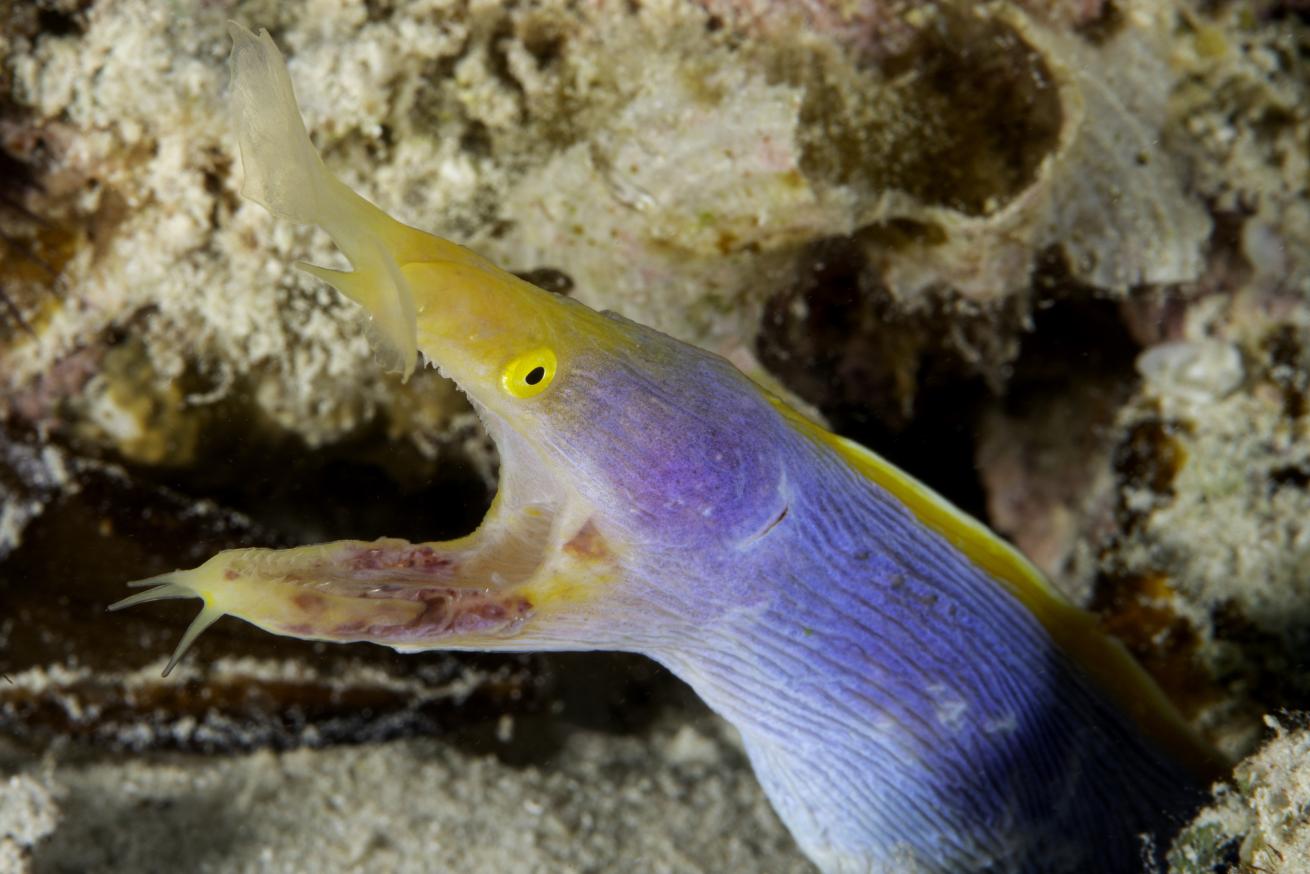
Richard AspinallRibbon eels captivate divers with their vibrant blue and yellow hues.
Ribbon Eel
Ribbon eels (Rhinomuraena quaesita) are appropriately named after their long, thin bodies that look like ribbons. Previously thought to be two distinct species—with black ribbon eels considered to be separate from the larger blue eels and the yellow eels—research has since identified the black versions as simply juveniles. As a black ribbon eel matures, it first becomes male and then, potentially, female, transitioning from black to electric blue (with a characteristic yellow dorsal fin) and then to entirely yellow as they grow. Females can reach over 3 feet long, and they are widely distributed across the Indo Pacific.
Ribbon eels mostly stick with the tried-and-trusted moray eel practice of hiding in the reef, peering out at the world from their hidey holes. They can sense very small vibrations in the water using their highly adapted nostrils, which help them hunt for small fish and crustaceans.
Richard AspinallThis longnose hawkfish (Oxycirrhites typus) is a master of disguise
Longnose Hawkfish
This long, slender five-inch fish is a favorite found across the Indo-Pacific. As with all six oddballs on this list, the longnose hawkfish (Oxycirrhites typus) isn’t particularly flighty and will often sit still for a photo—provided you can find one. Hawkfish tend to sit on coral heads, like a hawk, waiting for prey to pass them by; they’re efficient ambush predators.
Longnose hawkfish not only rely on stealth to hunt, but they also have superb camouflage that allows them to blend in with the sea fans they usually inhabit. A few minutes at the start of the dive—especially when you’re likely to be at your maximum depth—looking for one in a large gorgonian sea fan at 100 feet can be fun. It’ll also help you to understand why their checkered red-and-white pattern makes sense.
Related Reading: Ask a Marine Biologist: Why Are Polar Ocean Animals Giant?
A hand over your nose then stretched away from your face to suggest a long, Pinocchiolike nose is the universal hand signal for a longnose hawkfish. Juvenile lyretail hogfish also seem to favor the same gorgonians—they aren’t as notable, but the youngsters are cute nonetheless.
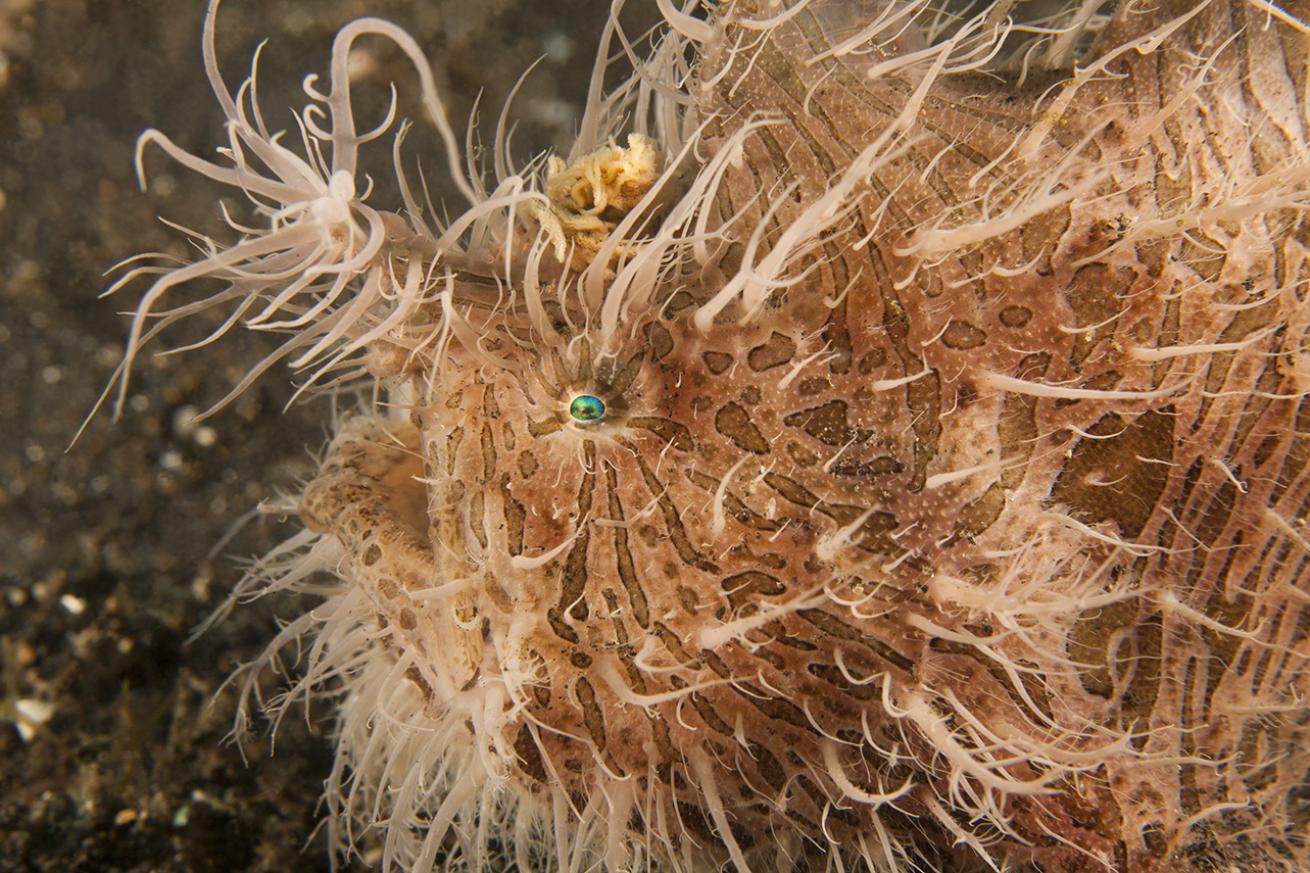
Shutterstock.com/Stubblefield PhotographyA striated frogfish (Antennarius striatus), hairy variation in Lembeh Strait, North Sulawesi, Indonesia
Frogfish
Everyone loves a frogfish (family: Antennariidae). Relatives of the lionfish, these sedentary fish catch prey that make the mistake of swimming past their large mouths. As such, frogfish don’t do a great deal of moving and can usually be found in the same spot, dive after dive, though they're sometimes found ambling around on modified pectoral fins that act like small legs.
Frogfish are masters of camouflage with complicated frills, skin projections and variable coloring to help them blend in and break up their outline to fool prey while also protecting themselves from predators.
Differentiating species can be tricky as frogfish vary so much from individual to individual. A frogfish picture on your memory card is worth having; there are several socialmedia communities that enjoy sharing and commenting on frogfish pictures and can perhaps help you determine if it’s a warty, a painted or a giant, for example.
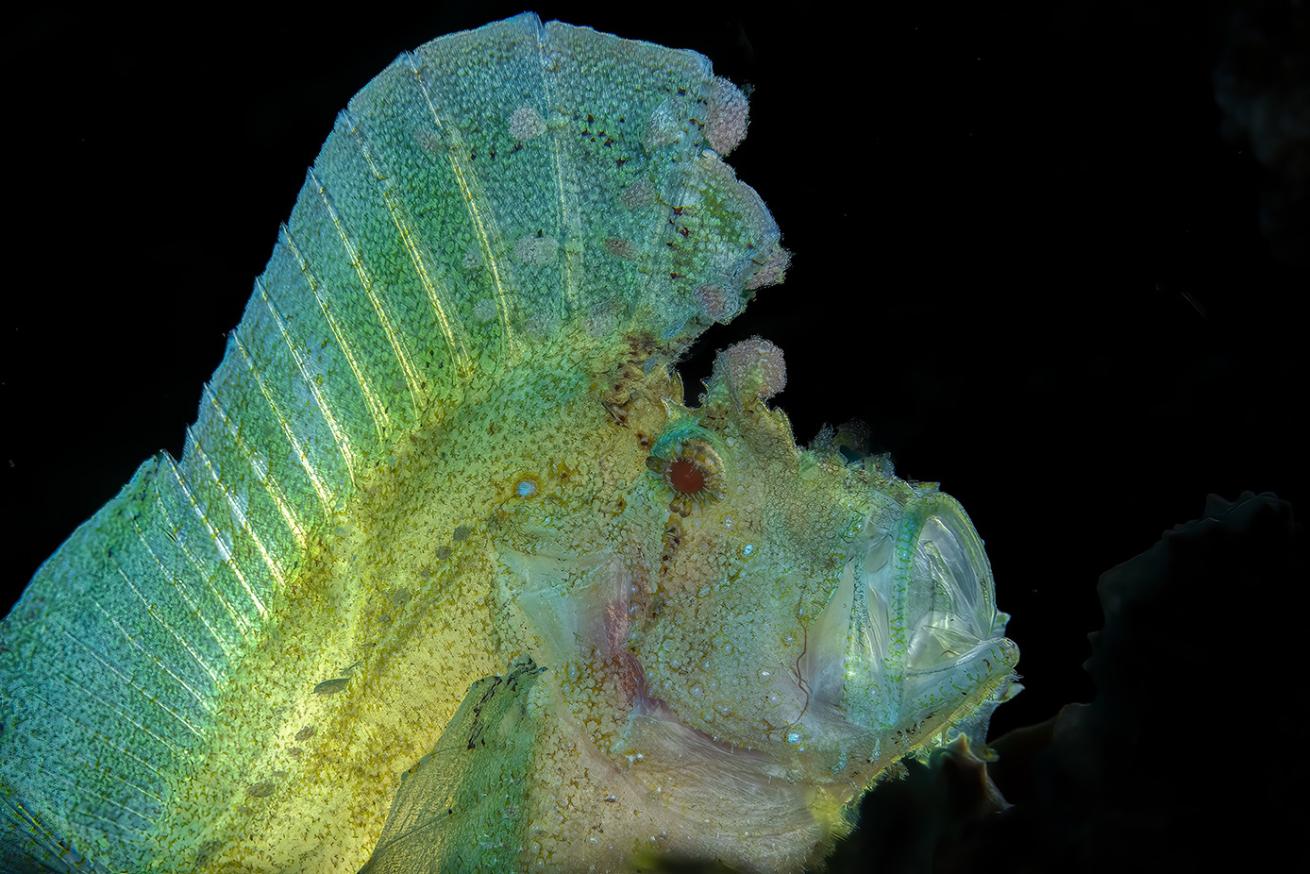
Shutterstock.com/Sonja OomsLeaf scorpionfish (Taenianotus triacanthus) in Mabini, South Luzon, Philippines
Leaf Scorpionfish
A highlight of any dive, the leaf scorpionfish (Taenianotus triacanthus) comes in an array of colors, from off white to light green, brown, even red or yellow. Their large dorsal fin, flattened appearance and ability to sway from side to side—resembling perhaps a dead and decaying leaf—helps with their subterfuge.
While some reports claim they are more active and hunt crustacean prey at night, sharp eyes should be able to find them in the day–look for coral outcroppings and crevices in areas where there are shrimp or schools of glassfish. Anecdotally, they’re often found in pairs, so if you manage to find one keep your eyes peeled for the other.
The leaf scorpionfish hand sign is one hand resting on the other, tipping side to side like a leaf in a gentle surge.
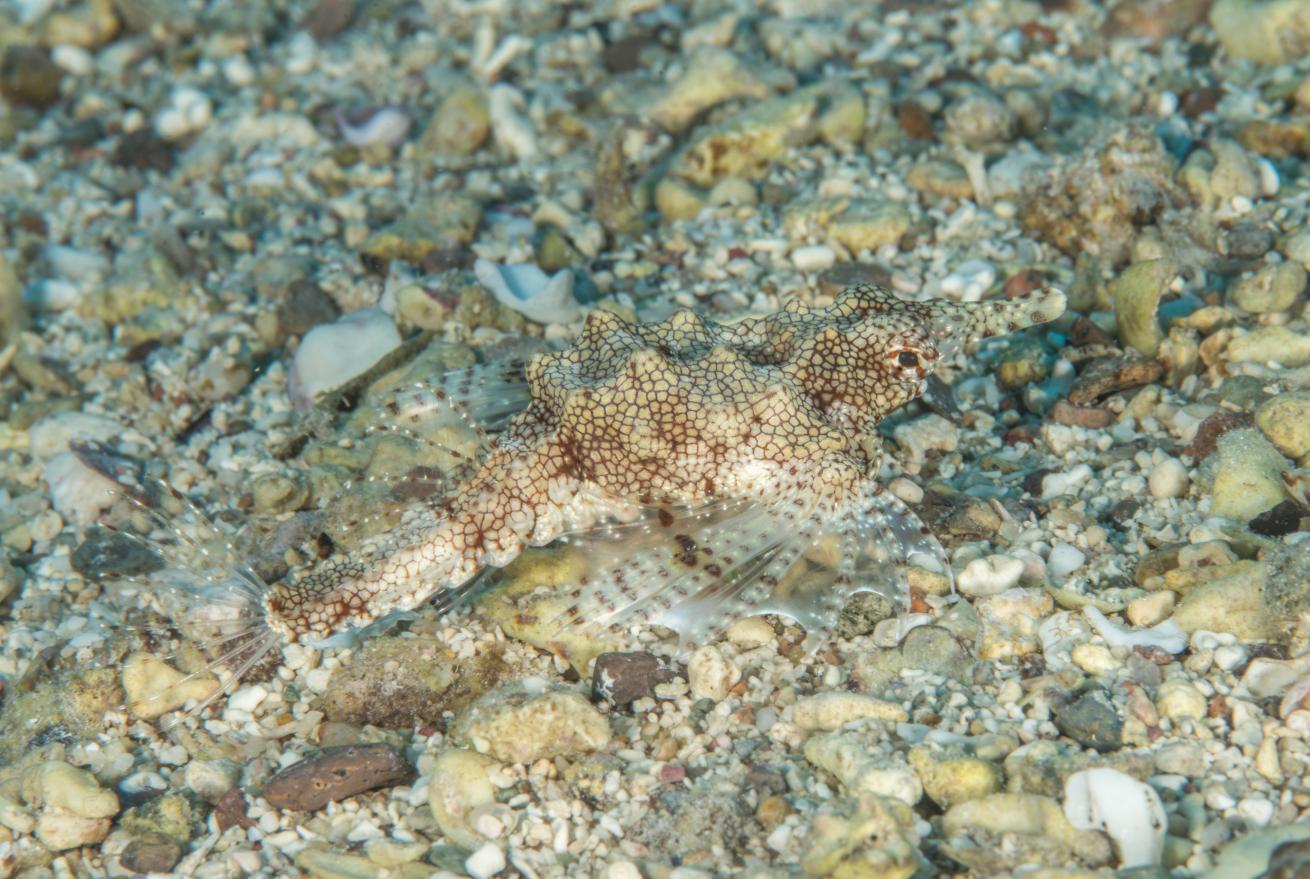
Richard AspinallOne of the trickiest on our list to spot–the seamoth
Seamoths
Seamoths (family: Pegasidae) are incredibly difficult to spot–highly cryptic, to use the scientific terminology—and one of the oddest fish you’re ever likely to see. Distant cousins of the seahorses and pipefish, these curious little critters, almost always spotted in pairs, spend their days picking tiny crustaceans from sandy seafloors. Unlike seahorses, seamoths aren’t long and thin but slightly bumpy and flattened; they share a similar looking “snout.” If seen with their large pectoral fins displayed, you’ll understand why they are also sometimes referred to as dragonfish.
Related Reading: 4 Epic Liveaboard Expeditions for Citizen Scientists
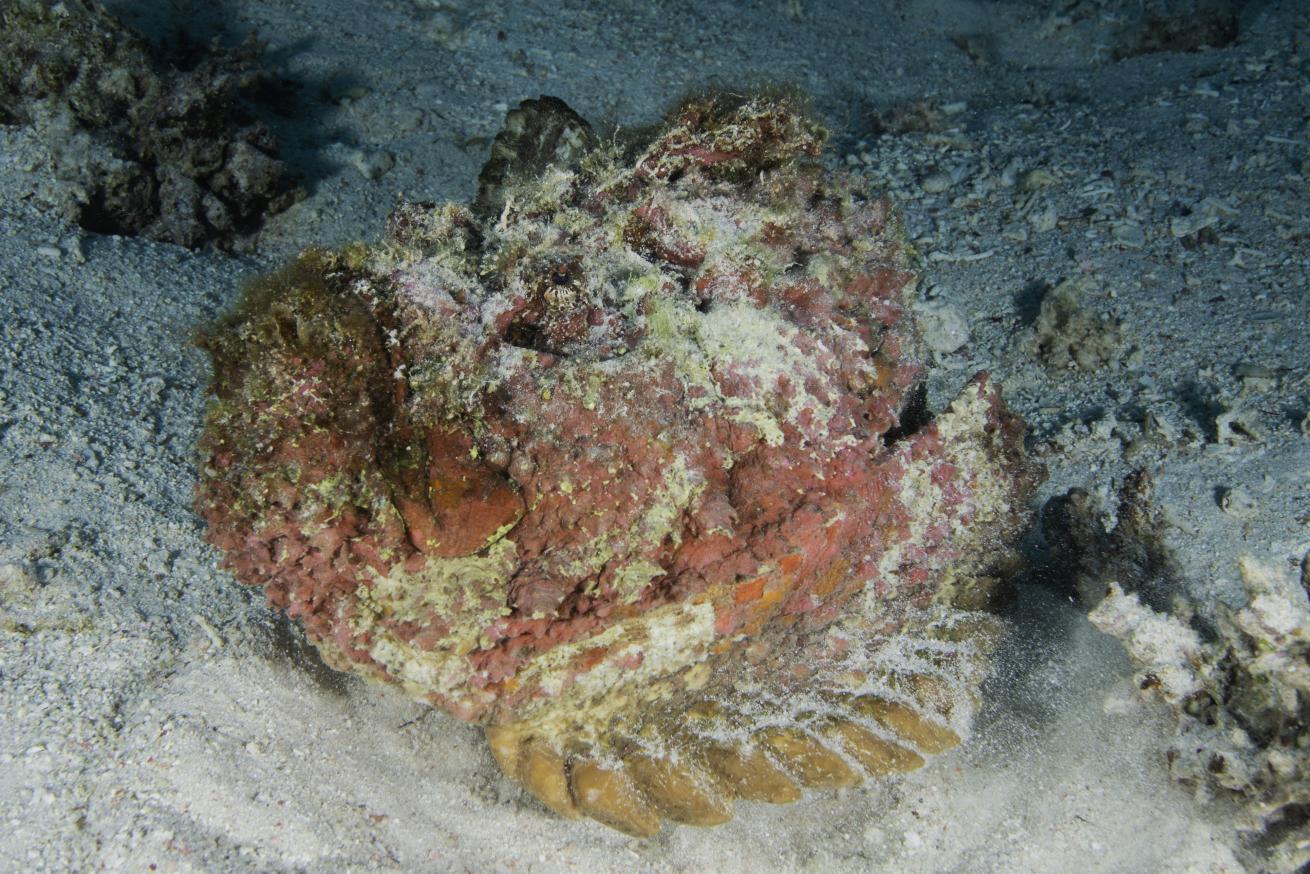
Richard AspinallWatch out for the venomous spines of stonefishes
Stonefish
Known as much for the smoking hand signal, stonefish (family: Scorpaenidae) are yet another slow-moving ambush predator that spends its days sitting around waiting for prey. Like their cousins the scorpionfish, stonefish are so incredibly difficult to see that you can miss them entirely despite being inches away. Ask any photographer, it’s an odd experience shooting macro on a section of reef only to see part of it sluggishly swim away—it can take a moment for your brain to realize there’s been a fairly substantial fish there all along.
Often, stonefish are found resting in the sand and can be easily mistaken for a small rock. One of the great joys of diving is finding one and pointing it out to your buddy, who may take a few seconds before signaling “Okay” (and who even still might not have seen it). It’s even better when they find one for you. Be careful though, as like many of their cousins stonefish have highly venomous spines.









